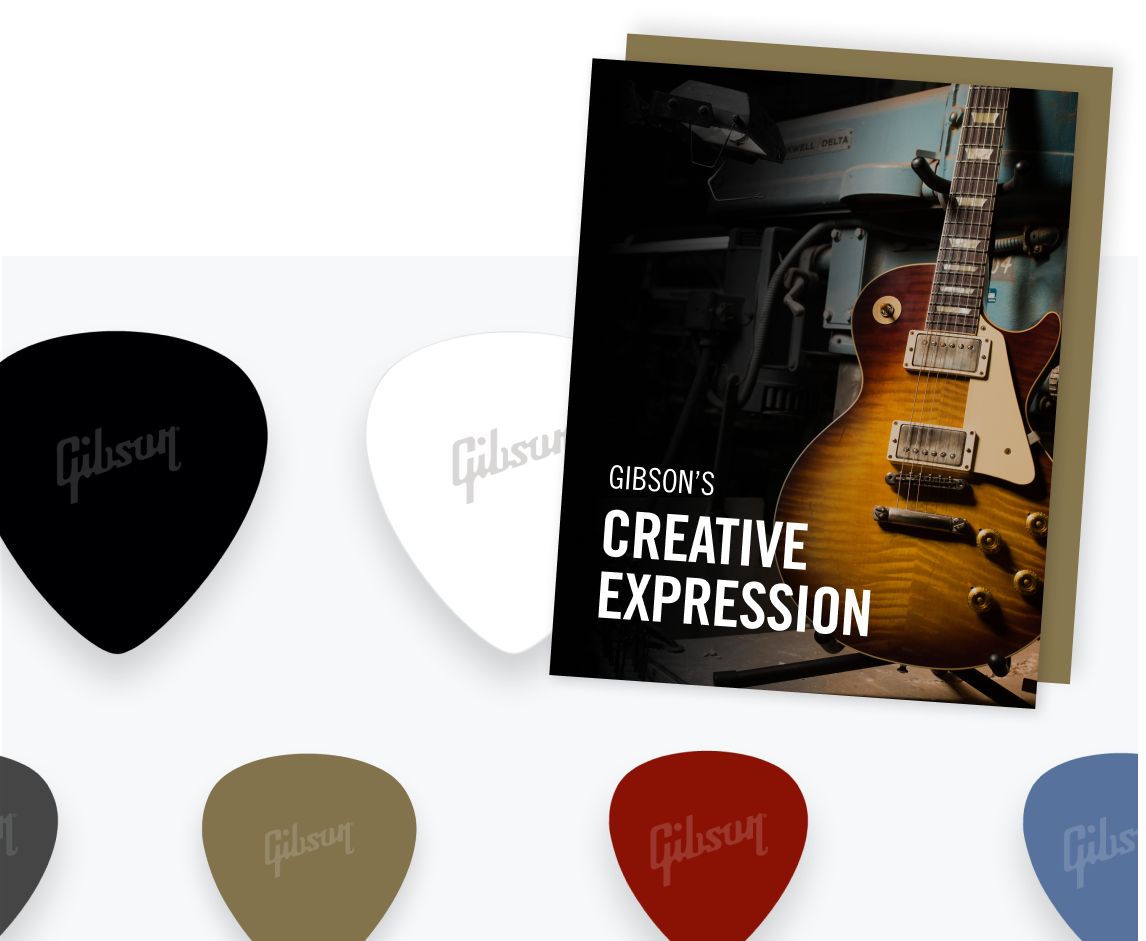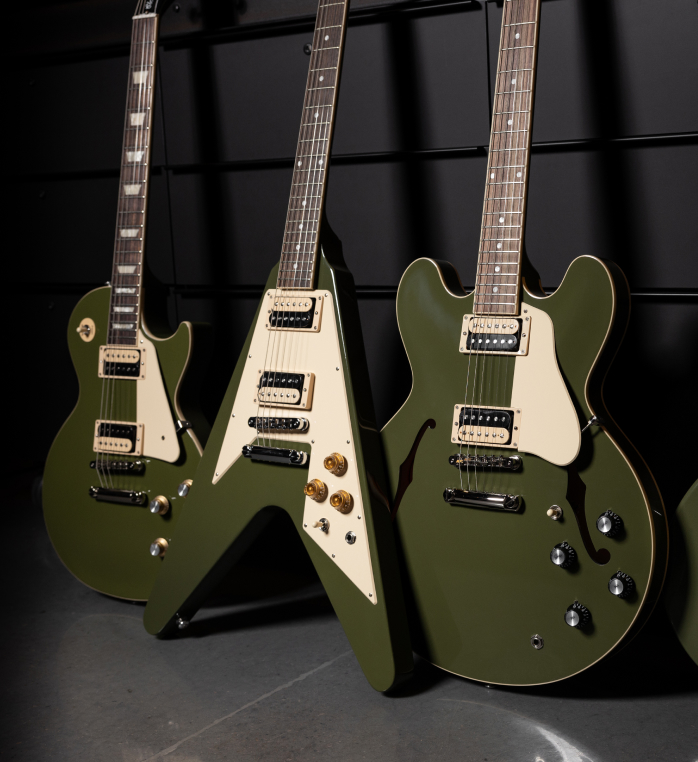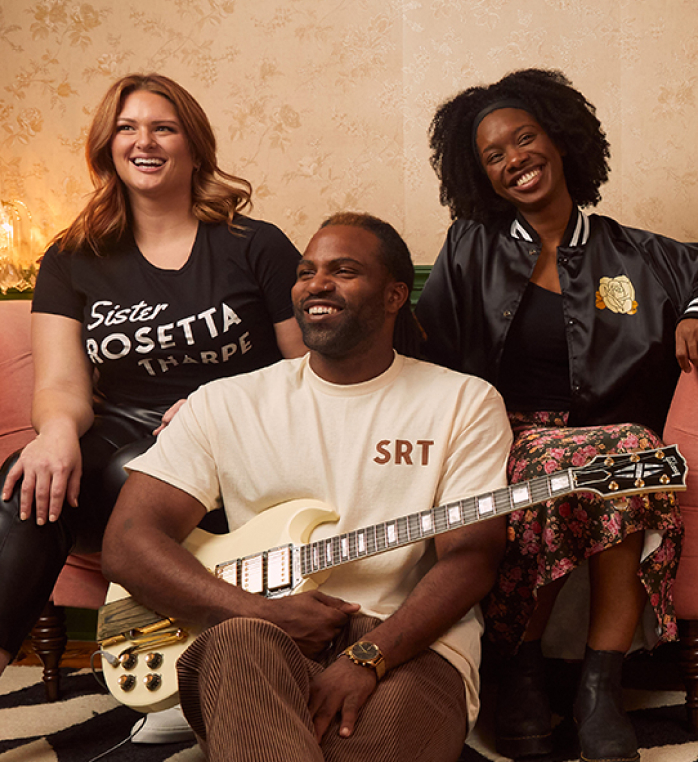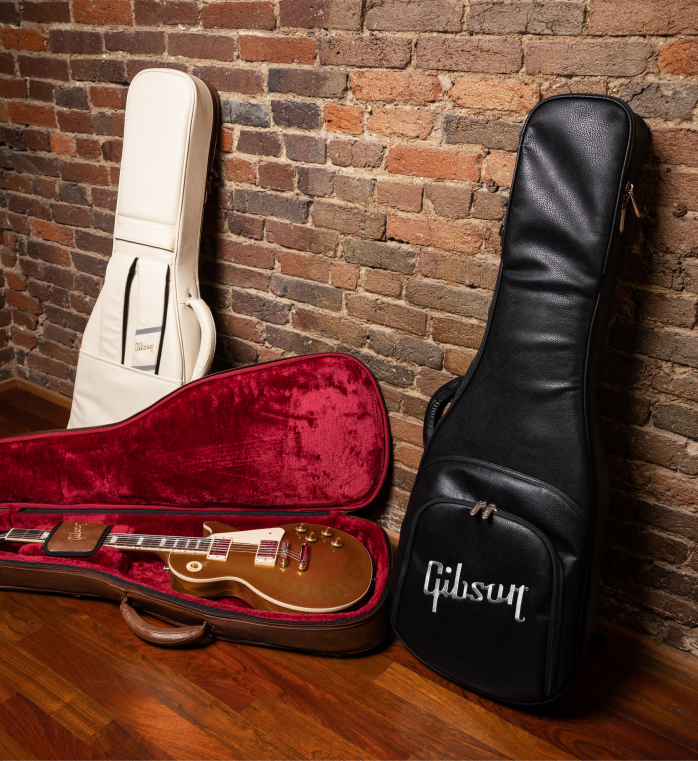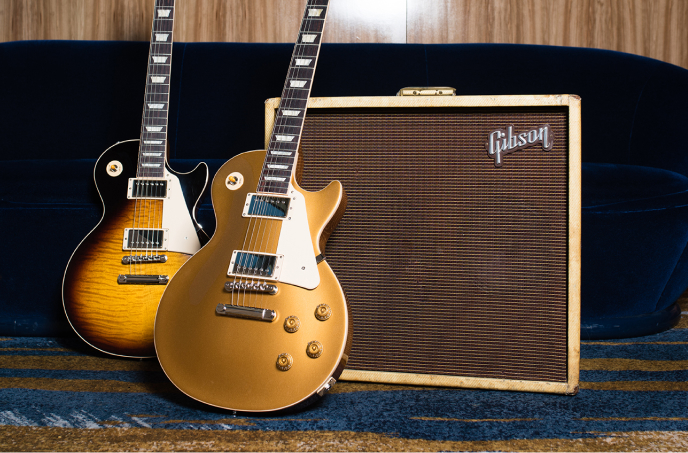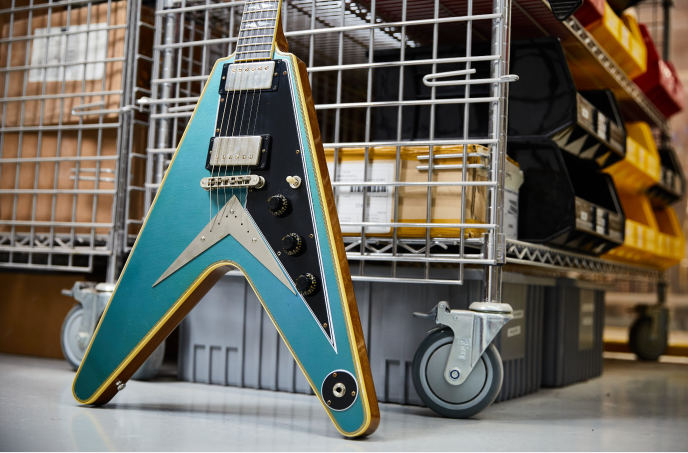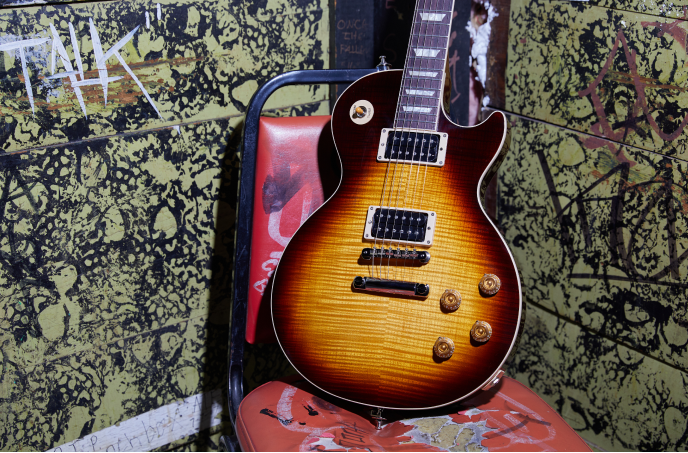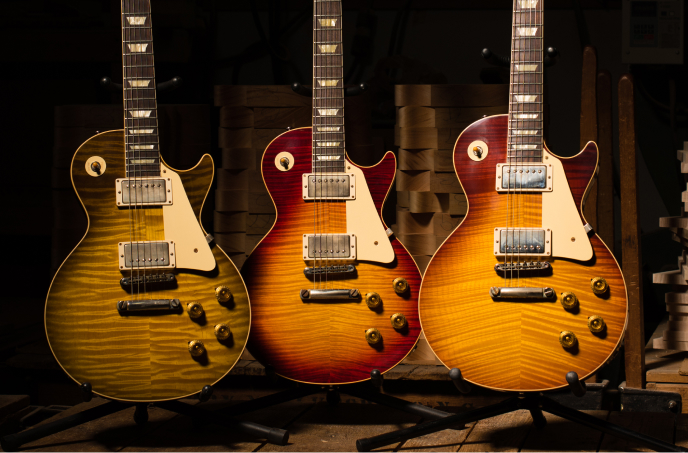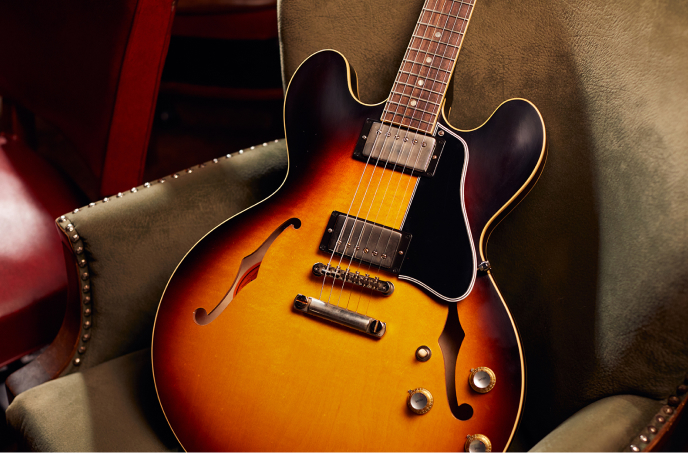THE SHAPE OF SOUND
We are the leading, iconic guitar brand that has shaped the sounds of generations of musicians and music lovers, across genres, for over 125 years. Founded in 1894 and headquartered in Nashville, Gibson continues a legacy of world-class craftsmanship, legendary music partnerships, and progressive product innovations that are unrivaled among musical instrument companies. For more than a century we have crafted the best guitars in the world, played by the most talented and influential guitarists, who continue to shape sound through modern music.
WHAT DEFINES GIBSON
Original
Aspirational
Authentic
Premium
CORE FANS
For the Professional Musician
Passionate Player
Collector
Enthusiast
meet GIBSON Products
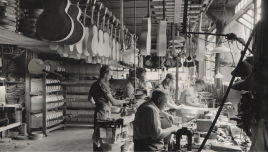
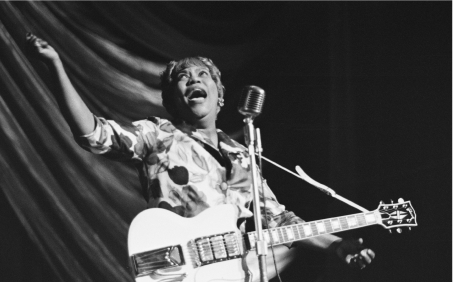
Gibson by
the decades

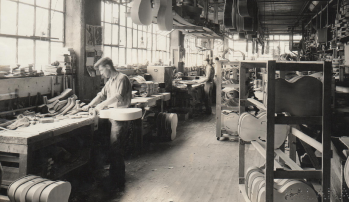

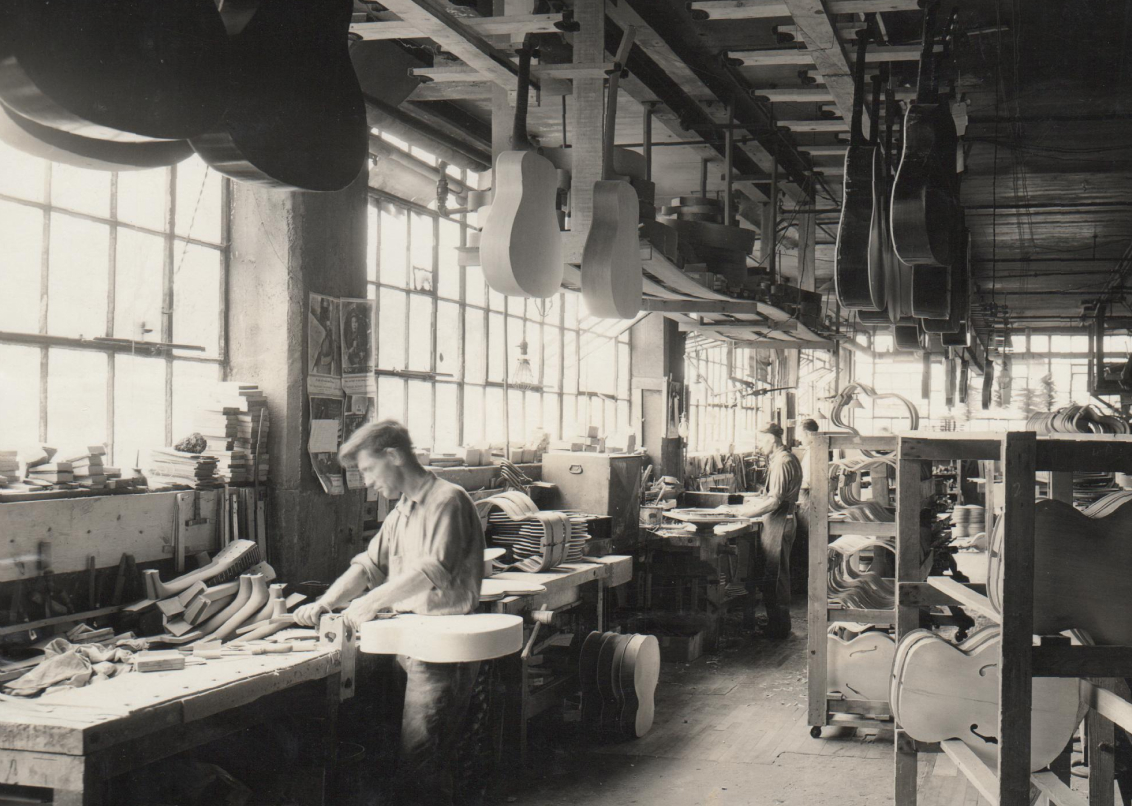
1890’s - 1940’s
Orville Gibson was a man ahead of his time when he started making instruments. The guitar did not yet occupy a prominent place in American music. Very quickly, Gibson started playing a major role in defining American music. In the early decades, mandolins and banjos ruled. It was thanks to Orville Gibson, Lloyd Loar, Ted McHugh, and Walter Fuller, and later our Golden Era Team, that Gibson evolved from an instruments company to the most influential family of brands in music.
THE BEGINNING (1894)
Orville Gibson begins making and selling instruments carved out of solid wood in his workshop in Kalamazoo, Michigan.
THE CARVED TOP (1896)
Orville Gibson files for his only patent, a design for a mandolin with a carved top arched like a violin’s, and sides cut from one piece of wood. This revolutionary idea, the epitome of craftsmanship in the service of sound, had a profound effect on American music.
INCORPORATION (1902)
Five Kalamazoo businessmen incorporate the Gibson Mandolin-Guitar Manufacturing Co., essentially Gibson Brands as we know it, and keep Orville as a paid employee as they begin producing his designs with an entire staff of luthiers.
ADJUSTABLE TRUSS ROD (1921)
Gibson woodworker Ted McHugh invents the adjustable truss rod, which strengthens the guitar neck against the gradual pull of the strings. This makes thinner neck construction possible, in turn allowing faster fretwork and more artistic possibilities.
THE L-00 (1932)
Gibson was a pioneer in the development of small body guitars in the beginning of the 1900s with its L-Series acoustics. These smaller guitars deliver a tonality that is best described in Gibson’s 1934 catalog as a sound of “perfect balance.”
THE JUMBO (1934)
Larger than any other flattop guitar Gibson offered, the Jumbo made for a remarkable instrument, and began a line and legacy that in 1942 would come to include the iconic J-45, known as “the workhorse” guitar.
FIRST GIBSON ELECTRICS (1935)
The “Electric Hawaiian” lap steel EH-150 is introduced alongside Gibson’s first electric guitar amplifier, followed the next year by the “Electric Spanish” style ES-150, which is popularized by pioneer jazz guitar player Charlie Christian.
THE SUPER JUMBO (1937)
In response to an order from the singing western film star Ray Whitley, Gibson creates a large and loud flat-top, the SJ-200. It quickly becomes a staple of cowboy crooners and, later, country music, 60s folk, and every acoustic genre to follow.
THE BANNER GUITARS (1942)
Though ostensibly shuttered during WWII, Gibson somewhat surreptitiously hires and trains dozens of talented women in Kalamazoo to produce several thousand guitars, which feature a banner decal on the headstock reading “Only a Gibson is Good Enough.”
